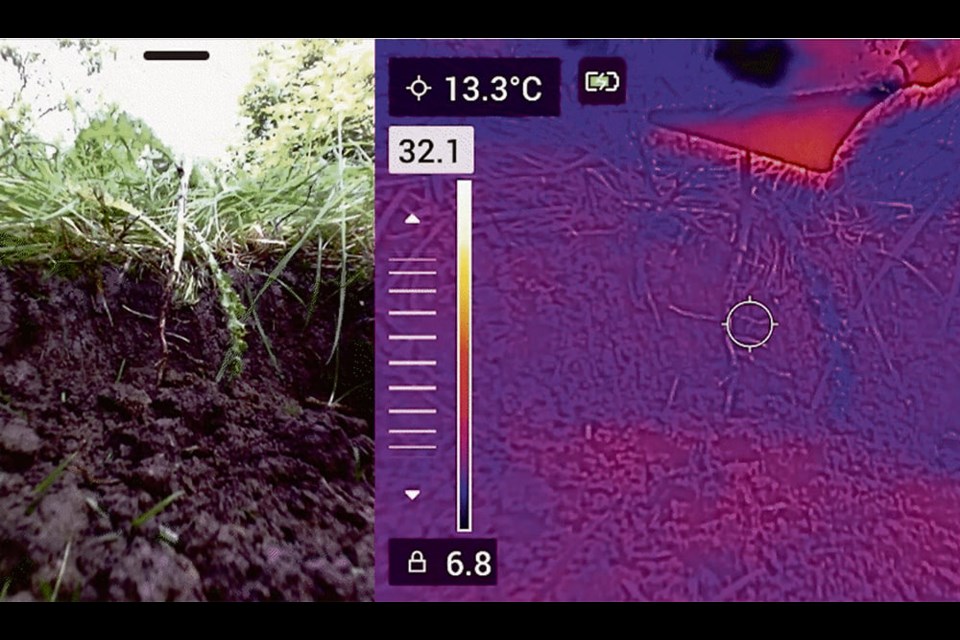SASKATOON — In response to concerns about chemical use and weed resistance, two British companies have teamed up to produce a system that uses electricity to kill weeds.
Tillage manufacturer Garford has partnered with RootWave, which developed the electrical technology. The resulting eWeeding system is 小蓝视频 introduced to the market, starting in the United Kingdom, with plans to expand it further, including to North America. It will be marketed here initially through Garford’s existing dealer network.
“The principle of electric weeding has been around since the late 1800s,” says Jonathan Henry, managing director at Garford Farm Machinery.
“So as an operating principle, it’s not a new one.
“The way it works is by passing current through the plant, it heats the fluid in the plant cells, vaporizes them and that damages the plant cells. After that happens, the plant dries out, desiccates and dies.”
Henry said the company has had a lot of interest from organic growers, and the system offers a high efficacy rate comparable to chemicals.
“We’re using physics rather than chemistry,” he said.
A power take-off driven generator creates high-frequency AC power that is fed down to a pair of electrodes, one following the other.
“What we do is apply two electrodes to the ground,” he said.
“The electricity passes from one to the other through the soil. If you use the soil as the return conductor you can destroy the root as well and thereby achieve a systemic treatment.”
The electricity does not harm plants that don’t come into contact with the electrodes.
Henry said studies conducted by RootWave have not detected any negative impact on the other beneficial soil biology, such as microfauna, nematodes, fungi and bacteria.
“There are multiple paths for the electricity to return. It’s such a large mass, therefore there is no significant heating in the soil structure. So it does what you want. It kills the weed and doesn’t hurt anything else.”
Using high-frequency AC power also reduces the risk to anyone who might accidentally come into contact with one of the electrodes.
“We’re using 18 kilohertz AC,” he said.
“At very high frequencies, electricity passes through the skin rather than through the internal organs. It will still burn you at these power levels, but it won’t create a cardiac event in the way DC or lower frequency AC would.”
Producers interested in the system would need to contact the company to discuss how an eWeeding system could be configured to meet their needs. There are several variables to consider.
“When we specify a machine for a customer, we need to have a detailed discussion with him about their production system,” Henry said.
“A key piece is what growth stage are those weeds going to be at when you want to kill them because the amount of energy needed varies proportionally to the amount of biomass and the amount of water in the plant. When they’re small it doesn’t need very much, but when it’s larger you need a lot of energy.
“That determines how wide the machine can be. When weeds are at an early growth stage, which is what we think most producers will want, then we’ll be able to build wider machines for higher productivity.”
Initially, the company will offer 60-kilowatt versions, but there are plans to develop 90, 120 and 180 kW models that will allow for wider toolbars.
The software in use on the current model controls the amount of power output from the generator. However, the company is also working on more advanced software capable of looking ahead of the implementation and estimating the amount of biomass, which will determine how much electricity is needed to do the job, rather than putting out full power all the time.
“If there’s a Canadian customer that has an application where 60 kW is the right one for what they want to get started with, we’ll put them in the hopper,” Henry said.
“At the moment, we have estimates for what our pricing is going to be. We estimate this concept will be somewhere in the region of ($347,000) for the six-metre version, and somewhere around ($216,900) for the three-metre version.”
A representative from Garford will be at in July and able to discuss the system along with Garford’s other products.




